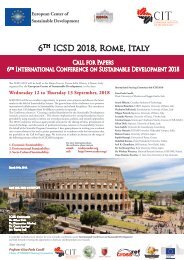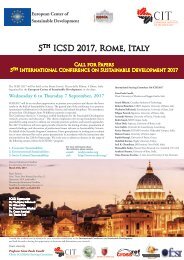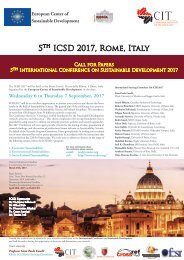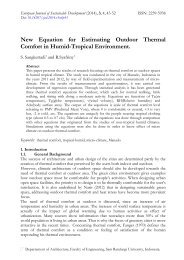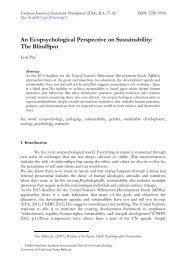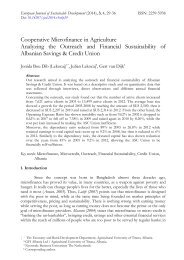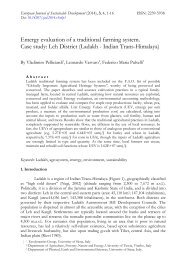Study of particulate matters pollution related with meteorological factors for a city from South-Central of Romania
Reducing the effects of climate change and air pollution is at present a global priority. Development and implementation of effective policies in order to achieve these reductions is a challenge that requires a good understanding of the underlying phenomena of climate change and air pollution. This paper aims to highlight the seasonal variation of PM10 concentration in Pitesti city depending on major meteorological factors (temperature, intensity of solar radiation, and relative humidity). The applied methodology consists in statistical processing, using specialized software, of a database containing historical records of concentration values of this pollutant and of meteorological parameters recorded concurrently. The results of processing a series of approximately 30000 values recorded from 2008 to 2011 indicate the fact that in every season (winter,spring, summer, and autumn) the concentration of PM10 varies according to a sixth degree polynomial function, whose variable is one of the considered meteorological factors. The mathematical relationship that best approximates the variation of average PM10 concentration in relation with the three meteorological factors is by the form of a multiple linear regression equation. Keywords: air pollution and human health, particulate matters related with meteorological factors, statistical analysis
Reducing the effects of climate change and air pollution is at present a global priority. Development and implementation of effective policies in order to achieve these reductions is a challenge that requires a good understanding of the underlying phenomena of climate change and air pollution. This paper aims to highlight the seasonal variation of PM10 concentration in Pitesti city depending on major meteorological factors (temperature, intensity of solar radiation, and relative humidity). The applied methodology consists in statistical processing, using specialized software, of a database containing historical records of concentration values of this pollutant and of meteorological parameters recorded concurrently. The results of processing a series of approximately 30000 values recorded from 2008 to 2011 indicate the fact that in every season (winter,spring, summer, and autumn) the concentration of PM10 varies according to a sixth degree polynomial function, whose variable is one of the considered meteorological factors. The mathematical relationship that best approximates the variation of average PM10 concentration in relation with the three meteorological factors is by the form of a multiple linear regression equation.
Keywords: air pollution and human health, particulate matters related with meteorological factors, statistical analysis
You also want an ePaper? Increase the reach of your titles
YUMPU automatically turns print PDFs into web optimized ePapers that Google loves.
G. Mitran, S. Ilie 23<br />
90<br />
Seasonal hourly variation<strong>of</strong> relative<br />
humidity [%]<br />
80<br />
70<br />
60<br />
50<br />
40<br />
30<br />
20<br />
10<br />
0<br />
1 2 3 4 5 6 7 8 9 10 11 12 13 14 15 16 17 18 19 20 21 22 23 24<br />
Hour<br />
Winter Spring Summer Autumn<br />
Figure 5. Seasonal hourly variation <strong>of</strong> relative humidity.<br />
Table 1. The values <strong>of</strong> coefficients <strong>for</strong> PM 10 variations functions depending on T, S,<br />
and R variables.The values <strong>of</strong> correlation and determination coefficients.<br />
Season X a0 a1 a2 a3 a4 a5 a6 r r 2<br />
T 34.661 3.993 0.5463 - 0.8038 0.1237 0.0017 -0.001 0.97 94 %<br />
Winter<br />
S 33.693 0.1324 - 0.01 0.0002 - 2E-06 7E-09 -1E-11 0.81 65 %<br />
R - 5E+06 423672 - 14641 269.55 - 2.7885 0.0154 -4E-05 0.95 91 %<br />
T 474.96 - 210.94 38.078 - 3.2921 0.1386 -0.0023 0 0.92 85 %<br />
Spring<br />
S 38.658 - 0.1651 0.0029 - 2E-05 7E-08 - 1E-10 6E-14 0.84 71 %<br />
R 9941.3 - 1124.8 51.904 - 1.2514 0.0167 - 0.0001 3E-07 0.95 90 %<br />
T 114861 - 32445 3791.4 - 234.58 8.1059 - 0.1484 0.0011 0.94 88 %<br />
Summer<br />
S 38.394 - 0.1336 0.0019 - 1E-05 2E-08 - 2E-11 1E-14 0.77 59 %<br />
R 5186.2 - 573.63 25.881 - 0.6083 0.0079 - 5E-05 1E-07 0.91 83 %<br />
T 8013.2 - 4617.1 1093.5 - 135.94 9.3752 - 0.3406 0.0051 0.97 95 %<br />
Autumn<br />
S 36.612 - 0.1879 0.0059 - 7E-05 3E-07 - 6E-10 5E-13 0.81 65 %<br />
R - 16184 1626.4<br />
-<br />
67.898<br />
1.5063 - 0.0187 0.0001 -3E-07 0.97 94 %<br />
In order to estimate the concentrations <strong>of</strong> PM 10 existing in the atmosphere, assuming<br />
that the average amounts emitted every season are equal to those <strong>of</strong> time interval 2008 -<br />
2010, the authors determined the variation functions <strong>of</strong> concentrations <strong>of</strong> this emission<br />
© 2014 The Authors. Journal Compilation © 2014 European Center <strong>of</strong> Sustainable Development.




